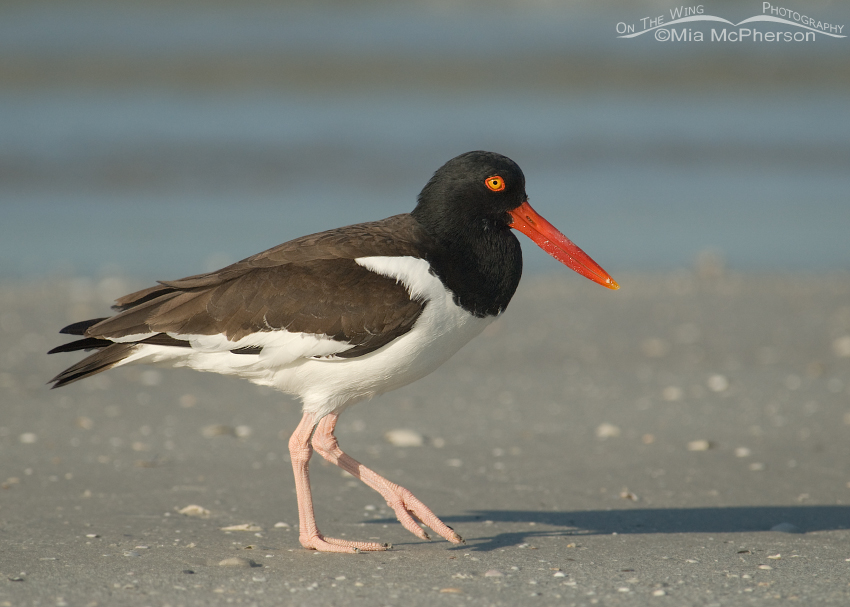Adult American Oystercatcher – Nikon D200, f6.3, 1/2000, ISO 400, Nikkor 80-400mm VR at 400mm, natural light
American Oystercatchers used to be a nemesis bird for me. They were a challenge to expose correctly because of the high contrasts between the whites and dark plus the orange/red bill. Then one morning I was able to get the exposure right and after that the oystercatchers were no longer a nemesis.
On the Pacific coast in North America there are Black Oystercatchers, they are a nemesis bird but only because I have never had the opportunity to photograph them. Yet.
I think that American Oystercatchers are beautiful shorebirds, they are striking and unusual and a great deal of fun to observe and photograph. American Oystercatchers nest in Florida and I would see a nest or two during breeding season. On one occasion I observed and photographed chicks and their parents for several weeks. I kept my distance from the chicks and took larger crops than usual to make sure I didn’t disrupt their normal activity or disturb the adults and chicks.
 Juvenile American Oystercatcher – Nikon D200, f6.3, 1/750, ISO 160, Nikkor 80-400mm VR at 400mm, natural light
Juvenile American Oystercatcher – Nikon D200, f6.3, 1/750, ISO 160, Nikkor 80-400mm VR at 400mm, natural light
I watched and photographed the juvenile oystercatcher above from the time it was just two days old. It had a sibling who apparently had wanderlust because it left the parents much earlier than this one did and moved south down the beach.
Juvenile American Oystercatchers have a dark-tipped bill, the adults have a nearly solid orangey-red bill and the tip is just a touch lighter. Juvenile oystercatchers have dark eyes and develop a red orbital ring during their first year, adults have bright yellow eyes and the red orbital ring is well defined.
American Oystercatchers are amazing birds to photograph, I enjoyed watching them pry open bivalves with their long bill, crunch tiny Coquinas and swallow them whole and observing what great parents they are to their chicks.
Mia


